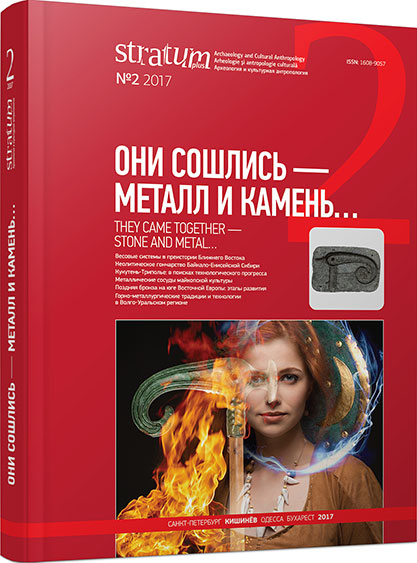Логистика кремнеобработки болградского варианта культуры Гумельница (по материалам поселений Орловка-Картал и Чалык)
Logistics of Flint Processing in the Bolgrad Variant of the Gumelniţa Culture (on Materials of the Orlovka-Kartal and Cealâc Settlements)
Author(s): Blagoje Govedarica, Dmitry V. Kiosak, Igor V. ManzuraSubject(s): History, Anthropology, Archaeology, Cultural Anthropology / Ethnology
Published by: Издательский дом Stratum, Университет «Высшая антропологическая школа»
Keywords: North-west Pontic region; prehistory of Lower Danube; Eneolithic; Copper Age; Gumelniţa culture; Bolgrad variant; early farmers; flint industry
Summary/Abstract: The article deals with the problem of flint processing in two settlements of the Bolgrad variant (the Gumelniţa culture) situated at the villages of Cealâc (Republic of Moldova) and Orlovka-Kartal (Ukraine). The settlements occupy different position within the North-West Pontic region. The settlement of Orlovka-Kartal is located on the Lower Danube whereas the second site is found deep in the steppe zone. The distance between the settlements is about between 75 km. Comparison of two collections from the settlements revealed significant difference in sources of raw materials and technological approach. Whereas most of tools in Orlovka-Kartal are made of brown Balkan flint (groups Ravno and Kriva Reka), inhabitants of the Cealâc settlement mainly utilized local grey flint from local (Prut-Dniester) sources. Waste products from the flint of local origin in the Cealâc settlement support the idea that the manufacturing of tools from this raw material was performed directly on the site. At the same time, the absence of flakes of the Balkan flint can signify that the tools were brought to the settlement in completed form and could have important symbolic value. Waste products in the Orlovka-Kartal are also extremely rare that assumes the use of a similar logistic model. Additional difference between the two collections is visible in dimensions of tools: in Orlovka-Kartal they are larger than in Cealâc that can be explained by scarcity of raw materials in the latter case.
Journal: Stratum plus. Археология и культурная антропология
- Issue Year: 2017
- Issue No: 2
- Page Range: 57-74
- Page Count: 18
- Language: Russian
- Content File-PDF

